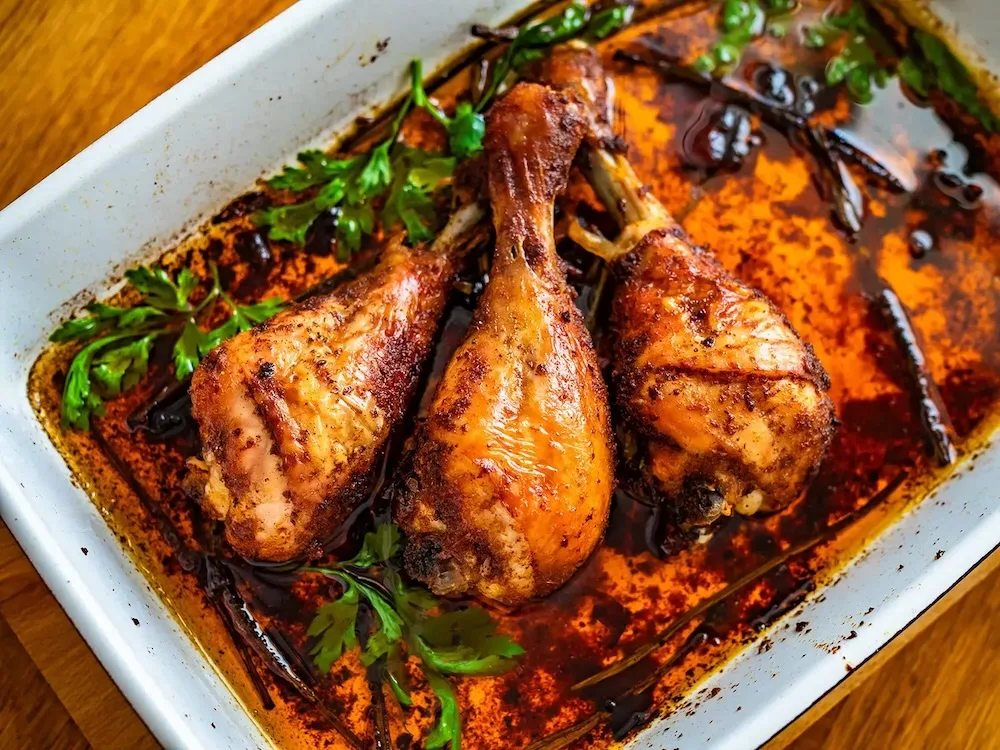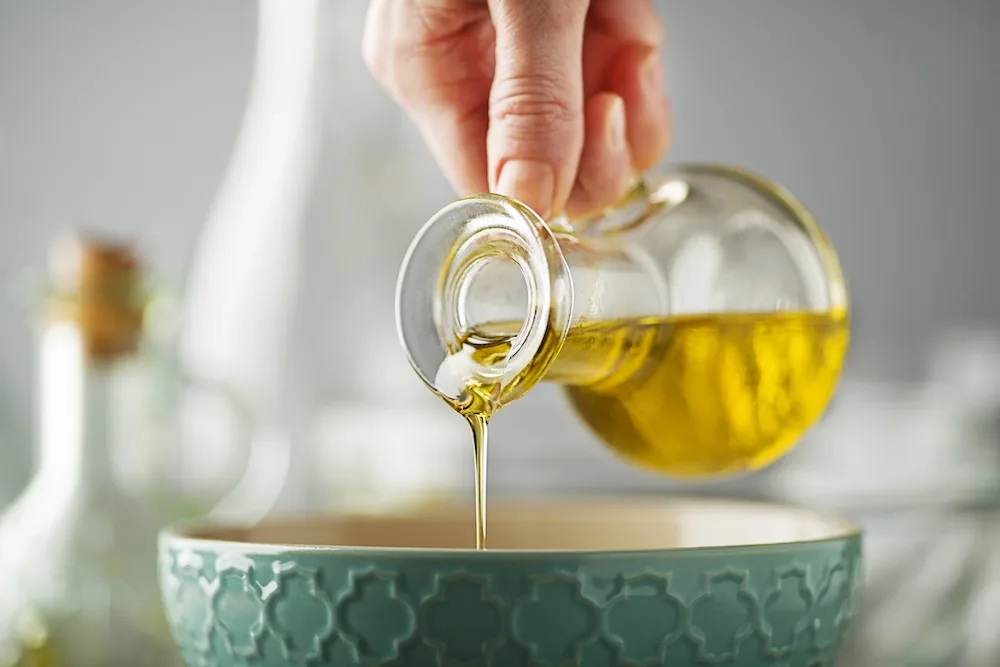Late last month, Heather and Bill Peplaw opened O’Love (135 Chesterfield Towne Center Chesterfield), an independent olive oil and balsamic vinegar boutique in Chesterfield Valley. For Heather, the shop is the realization of a dream that has been 15 years in the making—one that began when she first wandered into an olive oil shop while strolling down Main Street in St. Charles and immediately realized a passion that she had no idea was brewing inside of her. Heather ended up getting hired on the spot to work at the shop, then worked her way up through the ranks of the small chain and became an expert on all things olive oil and vinegar in the process. Now, in her own store, Heather and her partner in life and business, Bill, are excited to proselytize on the virtues of olive oil and guide people in all of its uses, while dispelling myths about it in the process. A nurse by trade, Heather has come to see this liquid gold as not only a delicious ingredient but also an essential part of a healthy lifestyle.
She recently shared some of her favorite olive oil tips, tricks, and fun facts that she believes can help make lives’ healthier—and more delicious.
Find the best food in St. Louis
Subscribe to the St. Louis Dining In and Dining Out newsletters to stay up-to-date on the local restaurant and culinary scene.
We will never send spam or annoying emails. Unsubscribe anytime.
This site is protected by reCAPTCHA and the Google Privacy Policy and Terms of Service apply.
Not all olive oil is created equally. One of the first things Heather wants people to know about olive oil is that there is a significant difference between most of what you find at grocery stores and what you get at an olive oil boutique. “The No. 1 thing about any food, including olive oil, is its ingredients,” says Heather. “If there is anything other than olives in your olive oil, it’s not real olive oil.” As Heather explains, most grocery store brands include rapeseed oil in their olive oil, which is the same oil that goes into canola oil. This means that there is very little actual olive oil in the bottles that are being billed as such and it’s why it is important to know where your olive oil is coming from to guarantee you are getting the real deal—and optimal health benefits. “The higher the polyphenol count, the healthier the olive oil,” says Heather. “A grocery store olive oil polyphenol count is around 75–95; our minimum is 250, and we have some that come in just under 900.”
Olive oil has an expiration date. Although most people consider olive oil to be a pantry item, it is important to be mindful of its expiration date. “Everything in our store has an expiration date,” says Heather. “Nothing can sit on our shelves forever; unlike grocery store olive oils, they will go rancid because there are no preservatives in them.” She says a good rule of thumb is to use your oil within a year. If you’re worried about using it all in that timeframe, buy a smaller bottle.
Like wine, olive oil has terroir. Similar to wine, the location where olive oil is grown has a great influence on its taste. “They are all so different; it’s like they have different personalities,” says Heather. She encourages people to try a wide variety of olive oils from different regions to narrow down what you like. “It really comes down to flavor preference,” says Heather. “Some people like their olive oil to be stronger and want olive-forward notes; others want lighter and milder. There is something for everyone.”
Olive oil is good for gut health. While probiotics and fermented foods might be the first things that come to mind when thinking about gut health, Heather wants people to add olive oil to that list. “It aids in digestion and helps repair the lining in your intestines,” says Heather, though that’s just one of its many healing properties. “It’s a very healing instrument and has been for thousands of years,” she says. “Back in the day, they didn’t have ointment for healing burns or other things like that, so they used olive oil. Something doesn’t have to have to have a bunch of ingredients in it for it to be magical.”
Olive oil has a high enough smoke point for cooking. Although it doesn’t have the highest smoke point of all the cooking oils, olive oil can get hot enough for cooking. “There’s a common misconception that you can’t use olive oil for cooking, but it can be heated up to about 400 degrees, so it’s perfectly fine,” says Heather. While frying is not a good choice—the high temperatures will degrade the oil—she says that most home cooking like sautêeing and roasting works with olive oil.
Olive oil is great in cocktails. Heather gets a lot of raised eyebrows when she suggests cocktails with olive oil in them, but she insists that tasting is believing. “I have to tell you, using olive oil in alcoholic beverages blows my mind,” says Heather. “You would be amazed at how they balance out the drink. If we didn’t tell you it was in there, you would never know, but you would taste the difference. One of her favorite cocktails at O’Love (which has a full liquor license) is called the Passport and consists of rum, cranberry-pear balsamic vinegar, pineapple balsamic vinegar, triple sec, club soda, and a few drops of olive oil on top.
gbh007 / iStock / Getty Images Plusgbh007 / iStock / Getty Images Plus Olive Oil Chicken
Olive Oil Chicken
Recipe: Olive Oil Chicken
At O’Love, Heather is excited to show customers some of the applications for the high-quality ingredients. She plans to offer demonstrations and cooking classes at the shop, where clients can learn how to make a wide range of delectable dishes, including one of her favorites, this blood orange extra virgin olive oil and dark chocolate balsamic chicken—the perfect dish for autumn.
Ingredients
3 Tbsp. blood orange extra virgin olive oil
¼ cup dark chocolate balsamic (espresso balsamic works well, too)
2 tbsp. dijon mustard
2 tbsp. fresh lemon juice
3 tbsp. minced garlic
1 tsp. salt
½ tsp. freshly ground pepper
4 ½ lbs. chicken, cut into pieces (you can use chicken leg quarters or a whole chicken; just cut into individual pieces like a leg, thigh, breast, etc.)
½ cup chicken stock
Juice of ½ orange
Optional garnish: orange zest, chopped parsley
Directions:
Rinse chicken, and pat dry with a paper towel.
Trim any excess skin/fat from the pieces.
Whisk the first seven ingredients together. (the olive oil does not need to be drizzled in here, because the mustard will be the emulsifying agent).
Add chicken into marinade and let sit in the refrigerator for three hours or overnight (not longer than 24 hours)
Preheat the oven to 400 degrees.
Transfer chicken and all the marinade into a greased or non-stick baking pan.
Roast in oven, on the middle rack, for about an hour until the chicken is cooked through. Keep an eye on it every so often; if the chicken skin begins to burn, cover with foil.
When the chicken is done, transfer to a serving platter and tent with foil.
Place the baking pan on the stove top over medium-high heat and add the ½ cup of chicken stock and the juice from ½ of an orange. Scrape any browned bits from the bottom of the pan and reduce the sauce for about five minutes until it thickens.
Spoon the sauce over the chicken pieces and garnish with the chopped parsley leaves and orange zest. Serve immediately.


Dining and Cooking